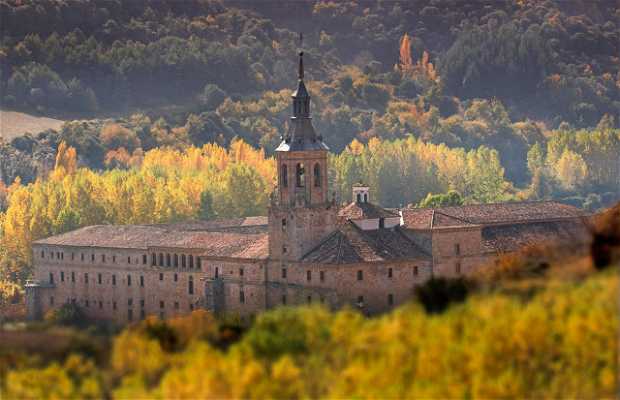Monastery of San Millán de Yuso
La Rioja, cradle of excellent wines and of the Castilian language (commonly known as Spanish). They say that the first written piece of Spanish can be found in a codex of the year 1040, part of the Emilianense Glosses found in this Monastery, and where in one of the paragraphs there are notes of the commentator employing the new language used by the people, the ancient Castilian.
However, we had to wait three centuries before a monk of San Millán, named Gonzalo de Berceo, applied it to his literature.
The construction of the Yuso Monastery also known as El Escorial de La Rioja, started in 1053, even though there is nothing left of this Romanesque building. The new monastery you can see nowadays is of Herrerian style and dates back to the 16th century.
The building consists of a church of the late Gothic, that was re-built afterwards, the cloister, and the monastic rooms.
The church has three naves with a star vault and it was built between 1504 and 1540.
The old chapter house became a sacristy at the end of the 17th century and it is one of the most spectacular in Spain. The frescos on the roof date back to the 18th century. The copper collection started with the abbot Fray José Fernández between 1693 and 1697 with 12 pieces. There are now 24 of them.
The lower part of the cloister was started by Juan Pérez de Solarte in 1549. It is of a Renaissance style, with Gothic vaults and point arches. The higher part is of a classic style with Tuscan columns.
But what definitely strikes the most is the Codex and Choir Books Room, in which one can observe some 30 gigantic books weighing between 30 and 40 kilos. They were hand-made during four years, and used the skin of about two thousand cows to make the scrolls. These books have all the chants the community uses for prayer during the year.
Next to the choir books there is a fabulous collection of facsimiles and, among them, one can find the codex 46, dated to the year 964, which is an encyclopedic dictionary of twenty thousand articles, as well as the codex 60 of the Emilianense Glosses with the first sentences in Spanish.






























